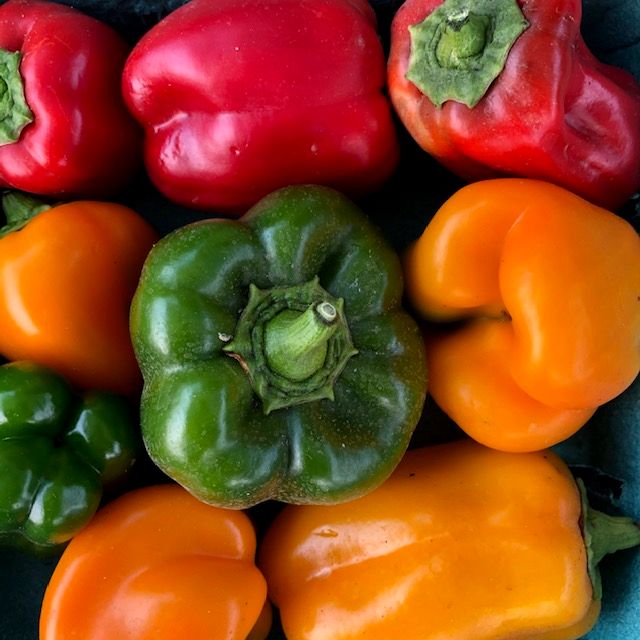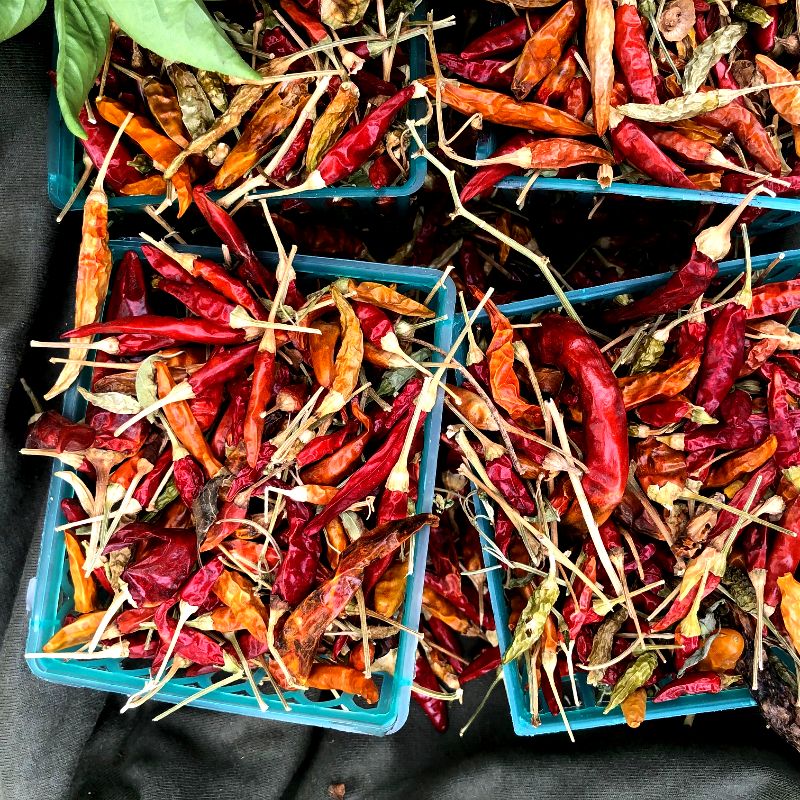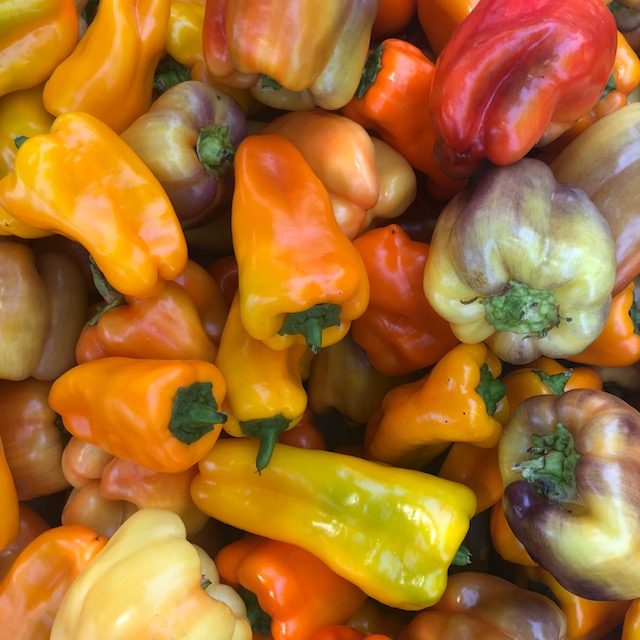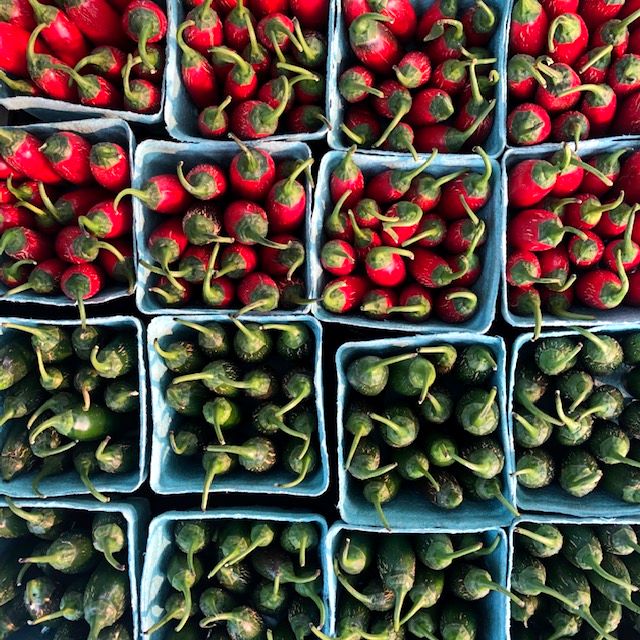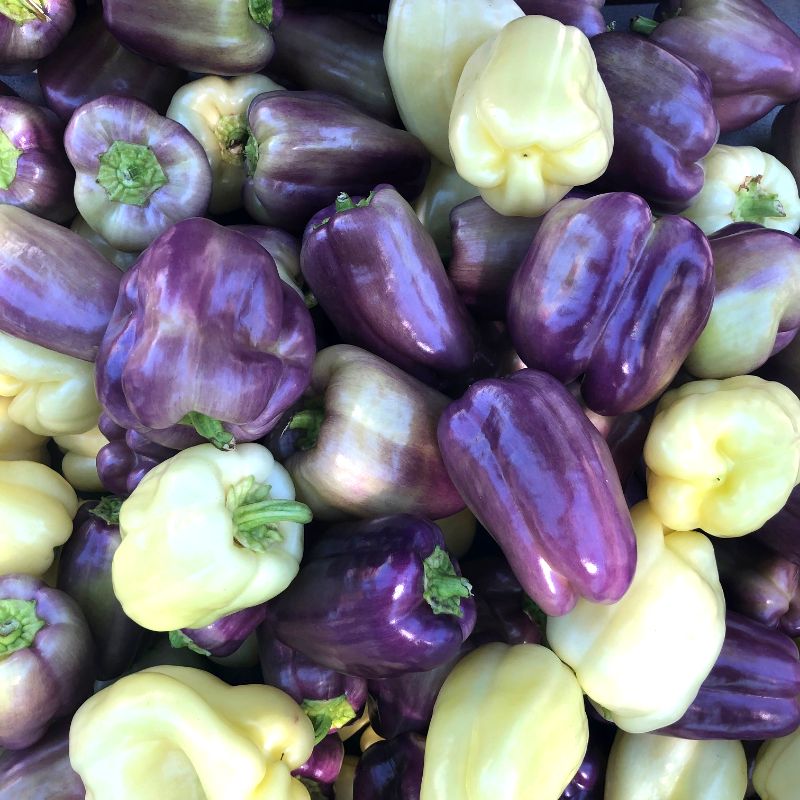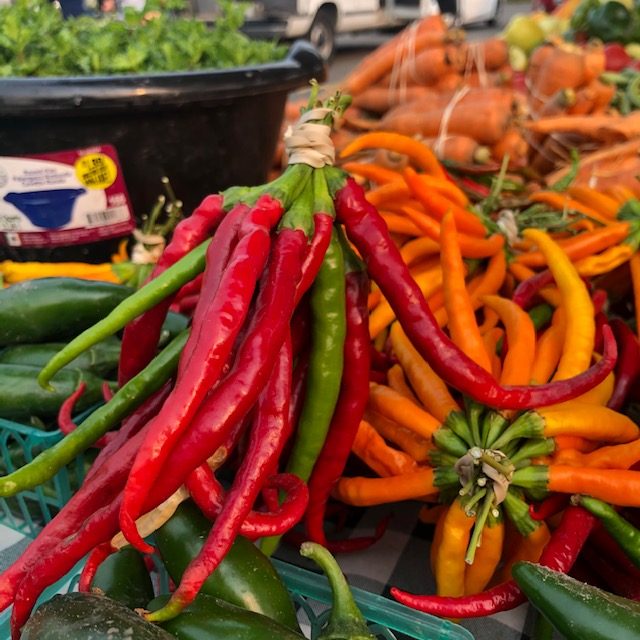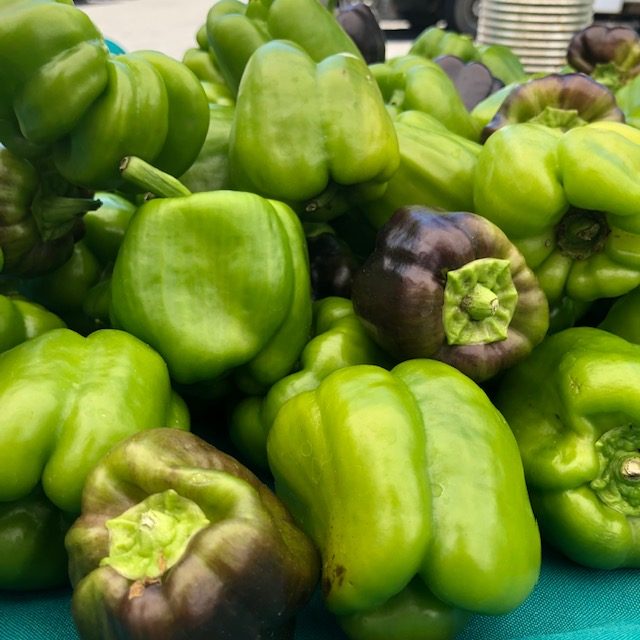Peppers and chiles are out in full force at Chico Certified Farmers’ Market – Right now is prime time for peppers of all kinds! You can find bell peppers, Hungarian wax peppers, banana peppers, Anaheim peppers, jalapeños, Thai chiles, scotch bonnets, and more! Sweet or spicy, peppers are a great addition to many dishes and are so fun to work with! Whether you’re using them to heat up your cooking (literally!), get a little sweet crunch, or just to add a some color, you’ll find a pepper that suits your needs and have fun perusing them all in the meantime! Come walk the pepper packed isles this Saturday and find the pepper that’s right for you! Read on for a short guide to sweet and spicy peppers!
- cfdbc11e fffb 836e 2d06 028200b3272c
- f864ba9d 7443 e562 d097 2b7de28532ba
- b3d0b36f b223 6e65 6ef4 42e6980e618b
- a7b073ad c183 f08a fc54 72768657bc2d rotated
- 2365b9b7 be2d 10d2 ac23 70f2f14a2459
Sweet or Spicy?
Chile Peppers
Peppers are generally classified into two categories: sweet peppers or chile peppers. Hot peppers are part of the capsicum family, and need a long, warm growing period. During that time they develop capsaicin, the chemical compound responsible for their spiciness. While chile peppers are known mostly for being hot, they each have unique, subtle flavors that can be manipulated depending on how they are prepared. Some varieties of chile peppers include ancho chiles, cayenne peppers, jalapeno peppers, fresno chiles, habanero peppers, etc. Chiles are great for hot sauces, salsas, in braising liquids and stews, pickled, or grilled! Look for these guys to be in season July through the end of the year.
Sweet Peppers
Sweet peppers, which are sometimes just blanketed with the term “bell peppers” are generally mild and sweet. They are also members of the capsicum family, but unlike other members of the capsicum family, the sweet pepper doesn’t contain capsaicin (the thing that brings the heat). Generally, the more colorful the pepper the better it is for you, with red bell peppers having twice the amount of vitamin C than their unripe counterpart, the green bell pepper. Green peppers are also more bitter than their colorful siblings. Sweet peppers come into season a bit earlier than chile peppers, somewhere around May or June. Some varieties include the standard bell pepper, gypsy peppers, shishito peppers, padrons, and sweet banana peppers. Try making a gazpacho, a pepper relish, a roasted red pepper sauce, adding to a salad, or stuffing sweet peppers!
- 0bbdc287 8fa5 6a76 e465 ca8d1e9bc300
- 711a9700 cf88 940c f61c 968632fbfd7e
- 711b3bb4 205d 46a0 19da 17bc91160413
- 52a76136 ad49 7218 364e f1b86d7e2cba rotated
- 53b58483 7806 1f45 30d1 849879753693 rotated
A Guide to Using Chile Peppers
Seed
The spongy white membrane with seeds attached is where most of the chile’s heat is concentrated. Slicing the peppers in half and scraping out those parts will calm down the intensity of the chile considerably.
Char
Cooking peppers briefly over a high flame can help take their edge off (and add some great flavor!). Choose your preferred method: Char chiles whole on the grill, under the broiler, or directly on a stovetop gas burner and peel off the burnt layer before seeding them (you’ll end up with some black bits and that’s just fine!). To make peeling easier, throw them in a sealed container while still hot to steam them a bit – it helps lift the skins away.
Soak
Capsaicin (the compound that contributes to a chile’s heat) is alcohol soluble. For the hottest specimens, remove membranes and seeds, muddle chiles, and soak in vodka for anywhere from a few hours up to a couple of days.

